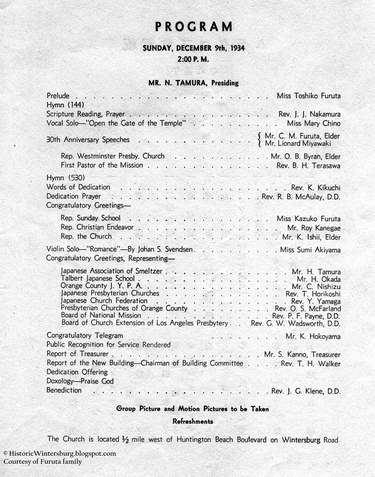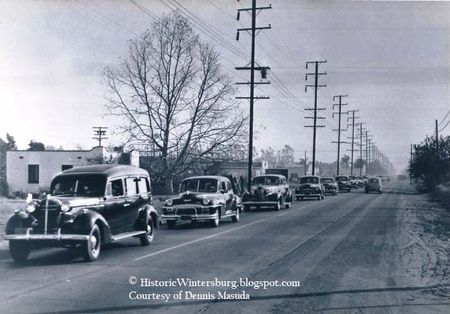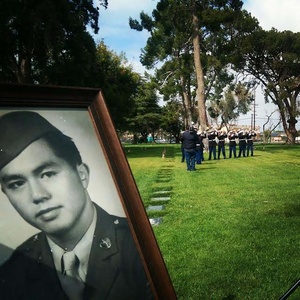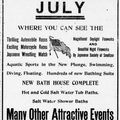In December 1934, the communities of Wintersburg Village and Huntington Beach gathered to dedicate the newest house of worship for the Wintersburg Japanese Mission. Formally recognized as a Church with the Presbyterian Church USA in 1930, the Wintersburg Japanese Mission was marking its 30th anniversary in 1934.

The first Mission building also had opened in December, in 1909, followed shortly by the Manse (parsonage). Reverend Joseph K. Inazawa and his wife, Kate Alice Goodman, were there for the 1910 dedication and services, as was Charles Furuta, the Furuta farm; and Reverend Terasawa and Dr. Ernest Adolphus Sturge, who had helped found the Wintersburg Japanese Mission in 1904.

The 1934 Wintersburg Japanese Church building is home to significant events that are part of the reason the Historic Wintersburg property is eligible for the National Register of Historic Places and designated a National Treasure.
It was home to the first Japanese American Citizen League meeting in Orange County. The Church and Mission buildings were shuttered during World War II incarceration, prompting the Presbyterian Church USA to formally apologize in 2014 for “abandonment” of the congregation. The 1934 Church building is one of six historic structures that are part of the Furuta farm and Wintersburg Japanese Mission complex at National Treasure Historic Wintersburg. All six structures have been deemed restorable by the National Park Service and the National Trust for Historic Preservation.
Fourteen years after the dedication of the Church building in 1934—and after Orange County’s Japanese American community had returned from World War II incarceration—the Church held a program of national significance. The body of Orange County hero, Staff-Sgt. Kazuo Masuda with the “Go For Broke” 442nd Regimental Combat Team, was returned home from Europe. He had been killed in action in Italy in 1944, and—in an event that received national media coverage in 1945—Staff-Sgt. Kazuo Masuda’s family was presented with his Distinguished Service Cross by General Joe Stillwell and an Army captain who would one day be President of the United States, Ronald Reagan.

On August 27, 1944, Staff-Sgt. Kazuo Masuda, a graduate of Huntington Beach High School, voluntarily led two men on a night patrol across the Arno river and through the heavily-mined and booby-trapped north bank. Hearing movements to his right he ordered his men to cover him while he crawled forward and discovered that a strong enemy force had surrounded them.
Realizing that he was trapped, he ordered his men to withdraw while he engaged two enemy automatic weapons. At the sacrifice of his life, he enabled his comrades to escape with valuable information which materially aided the successful crossing of the Arno river. Finally, in 1948, Staff-Sgt. Kazuo Masuda was returned home to be laid to rest.
The funeral services were held in the Wintersburg Japanese Church in 1948 with a military honor guard. The funeral procession made its way down Beach Boulevard to the Westminster Memorial Park for the burial, where Marines from El Toro Marine Corps Air Station fired a 21-gun salute.

In 1988, at the official signing of the Civil Liberties Act, Staff-Sgt. Kazuo Masuda and his family were remembered by President Ronald Reagan.
Watch President Reagan speak in 1988 about visiting the Masuda family decades earlier in 1945 (Video courtesy of the Ronald Reagan Presidential Library)
Members of the Masuda family and Clarence Nishizu, a congregant of the Wintersburg Japanese Mission, were at the signing with President Reagan, who had visited the Masuda family when he was a young Army captain at their Talbert farmhouse with General Joe Stillwell in 1945. Captain Ronald Reagan and General Joe Stillwell were there to award posthumously the Distinguished Service Cross for Staff-Sgt. Kazuo Masuda.

Today, the 1934 Wintersburg Japanese Church building remains standing and is one of six historic buildings that are part of National Treasure Historic Wintersburg, listed as one of America's Most Endangered Historic Places in 2014 by the National Trust for Historic Preservation and listed as one of Orange County's Most Endangered in 2017 by Preserve Orange County. The grave site of Staff-Sgt. Kazuo Masuda is home to the annual Memorial Day services held by Kazuo Masuda Memorial VFW Post 3670. The 21-gun salute remains part of the annual Memorial Day program, at which all military veterans are honored for their valor and service.

* This article was originally published on Historic Wintersburg blog on December 10, 2017.
© 2017 Mary Urashima





